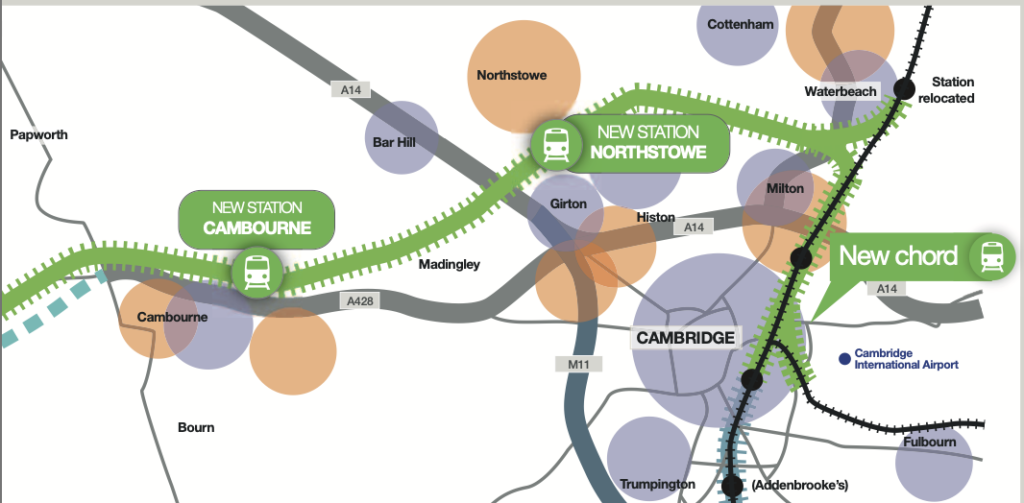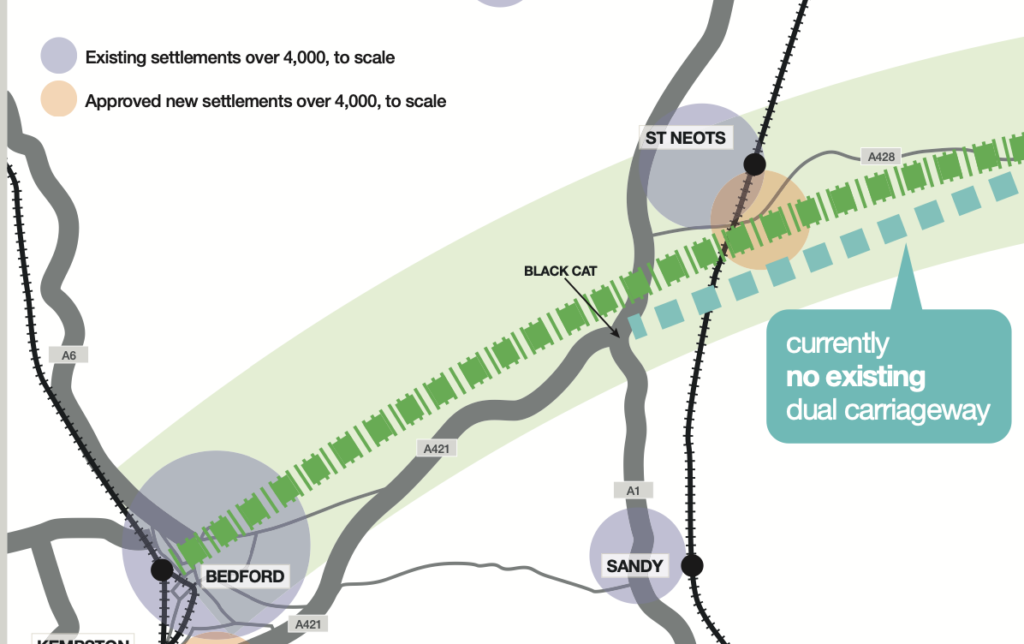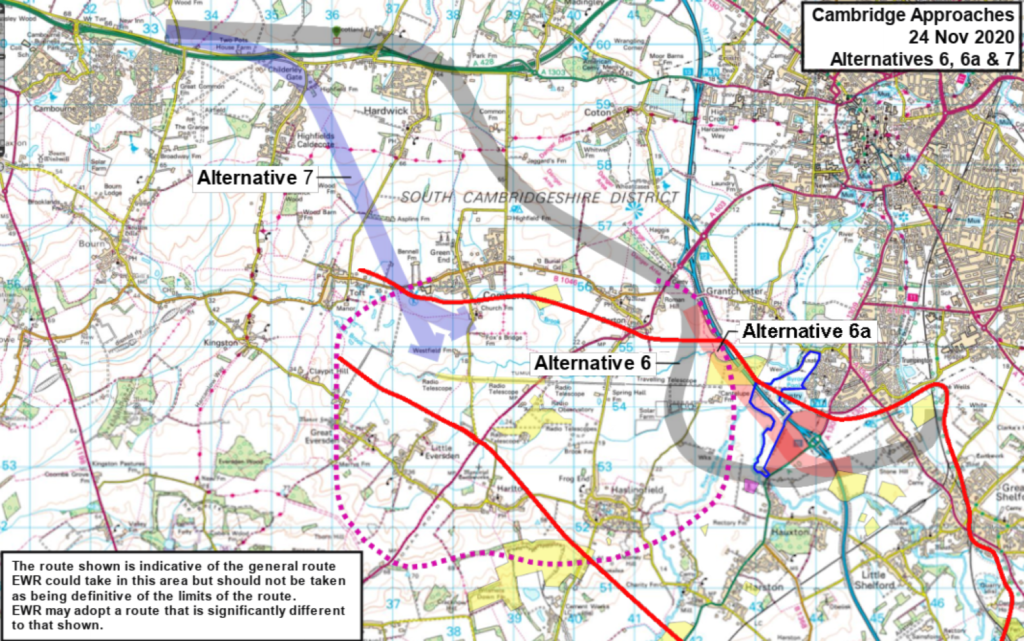**** For people new to this website: Cambridge Approaches favours a northern approach to Cambridge. Routes in this post are showing what might happen if we don’t do anything. They are not routes that are endorsed by Cambridge Approaches. ***

East West Rail’s Option E has located the Cambourne station to the south of the town. We think this is a misguided and short-sighted proposal that would fail to deliver potential commercial benefits, be more inconvenient for passengers and damaging to the environment.
The prime reason for this is that a station to the south, near Caxton, is completely impractical for the current housing and for the planned housing developments at West Cambourne and Bourn Airfield as well as expected developments to the north. Locating the station to the north of the A428 would not only unlock commercial benefits for the town in terms of land values but also reduce the number and length of commuter car trips required to the station. It would allow the area to be more easily developed according to the local plan and the wishes of local people who may not care about an extra 2 minutes to get to Oxford because, frankly, they very rarely go there anyway.
A transport hub north of the A428 connecting the CAM (the proposed metro system) and C2C (the proposed Cambourne to Cambridge busway), which both plan to follow the A428 near Cambourne, and a north Cambourne EWR station would provide an efficient overall transport system between homes and workplaces. The ‘multi-modal corridor’ (i.e. running different forms of transport in one corridor) objective of the OxCam Arc could be supported by an EWR station close to the A428 expressway north of Cambourne. Although an alternative C2C route has recently been suggested to connect to a south Cambourne station, it would need to cut across green recreational parkland areas within Cambourne – clearly undesirable.
Such a northern station also allows EWR total flexibility in the choice of a northerly or southerly approach into Cambridge – a station in south Cambourne would effectively lock EWR into a southerly route. While EWR’s current proposal (part of their Option E) is to enter Cambridge via the proposed Cambridge South station, they have accepted, recently more openly, that there is a case for entering Cambridge via Cambridge North. This route would serve communities in Northstowe, Oakington and the many planned developments in this area, and hence improve the currently poor business case, as well as minimising the environmental damage that a new rail line will cause.

By locating the station to the north of the A428, the EWR line would not need to cross the planned A428 expressway between the Black Cat and Caxton Gibbet roundabouts (i.e. to the west of Cambourne) and so dispense with a major design interface which is all too often the cause of significant cost overruns and programme delays.

The environment too would benefit from a north Cambourne station. By integrating the station with the local housing developments, the visual impact could be reduced compared to a station in open countryside. The route out of a north Cambourne station towards Cambridge should follow the A428 for several miles, whichever approach into Cambridge is finally adopted. This multi-modal alignment would have less impact on wildlife, including the legally protected Special Area of Conservation at Wimpole and Eversden and the foraging and flight lines of the Barbastelle bats, all over the current Option E area than if the road and rail ran along separate routes. The same can be said of the route from a Cambourne north station west towards Bedford where there is an opportunity for a multi-modal corridor all the way to the Black Cat Roundabout, a distance of over 17 miles. Other advantages of multi-modal corridors include less damage to precious farmland, less disturbance to rural villages and less severance of important links between villages e.g. for school children, not to mention the MRAO planning exclusion zone. We have highlighted the advantages of multi-modal corridors before along with our example route to Cambridge South.

This Cambourne North Station proposal is strongly supported by Cambourne Town Council, members of South Cambridgeshire District Council and local MP Anthony Browne. It was also a core component of the popular CBRR proposal. It has so many advantages over the current Option E solution.
It may be possible to have a Cambourne North Station and a route around the edge of Bourn Airfield and then back on to the option E line (see alternative 7 above). We have some reports that this is what EWR Co. are planning. Public recording of survey evidence and the strange assumption we understand (from Anthony Browne’s constituency office) that EWR Co. are making about not needing to double the busy Cambridge Line south of Shepreth Branch junction point to something like our alternative 4 route for the approach to Cambridge south. This would be an environmental and planning blight disaster for our area and not make full use of the possible multi-modal corridors. There is an opportunity for EWR Co. to do the right thing by the communities they aim to serve and in the process provide some sorely needed improvement to the weak business case for their railway that we will all be paying for.
We will have to wait until the New Year before we know whether EWR also see the sense of this.
